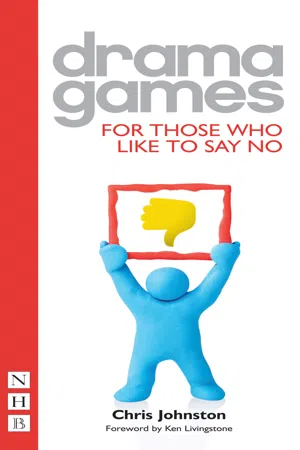
- 240 pages
- English
- ePUB (mobile friendly)
- Available on iOS & Android
Drama Games for Those Who Like to Say No (NHB Drama Games)
About This Book
A dip-in, flick-through, quick-fire resource book in the NHB Drama Games series, this title is for teachers and workshop leaders working with difficult or reluctant students, youth groups, young offenders, and all those who seem intent on saying 'no' to whatever is offered them.
For these groups, drama games and activities need to be robust and engaging, and the dozens that appear in this book have been devised with this in mind - and then tested by their target players. Each page features clear instructions on How to Play, notes on the Benefits of the Game, and advice on age range, number of players and timing.
Following the ninety games and exercises aimed at developing core skills, the book offers scenarios for a series of improvisational challenges that test participants' abilities in mediation, communication, negotiation, assertiveness and managing emotions. Also included is a collection of games aimed at preparing teachers and workshop leaders for facilitating challenging sessions.
The ultimate aim is to encourage reluctant participants to engage, collaborate and develop not just skills for drama but skills for life.
'This book offers invaluable ways for artists, teachers, workshop leaders and activists to better use the arts to empower young people' Ken Livingstone, from his Foreword.
'packed to the brim with bright and breezy ideas - a bargain!' - Total Theatre Magazine
'each section of the book is well laid out and the games are clearly explained... contains some very interesting exercises' - Youth Drama Ireland
Frequently asked questions
Information
| Players | Age | Time |
| Any number | 10+ | 10 |
| Players | Age | Time |
| Any number | 10+ | 10 |
| Players | Age | Time |
| Any number | 10+ | 10 |
Table of contents
- Cover
- Title Page
- Contents
- Dedication
- Foreword by Ken Livingstone
- Introduction: Shaking Hands with Difficulty
- Acknowledgements
- Part One – Engagement
- Part Two – Play
- Part Three – Collaboration
- Part Four – Skills
- Part Five – Challenges
- Part Six – Training
- Index of Games
- Keywords
- Alphabetical List
- About the Author
- Other Titles in the Series
- Copyright Information